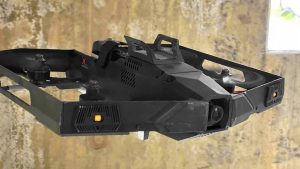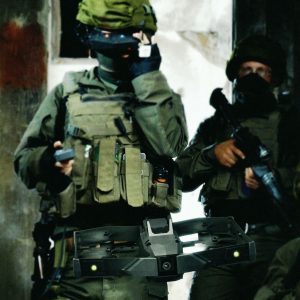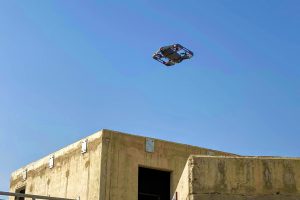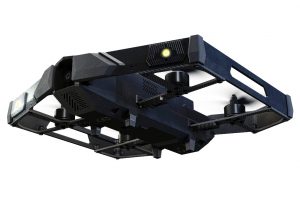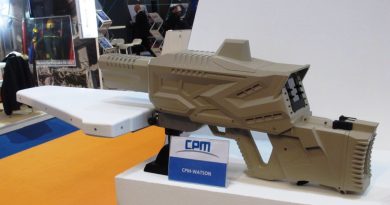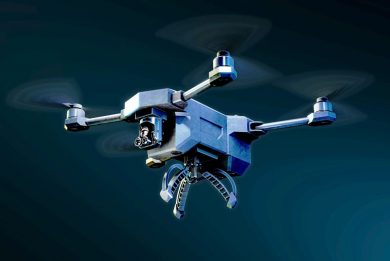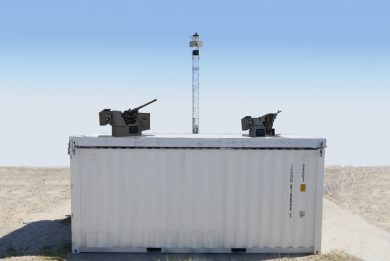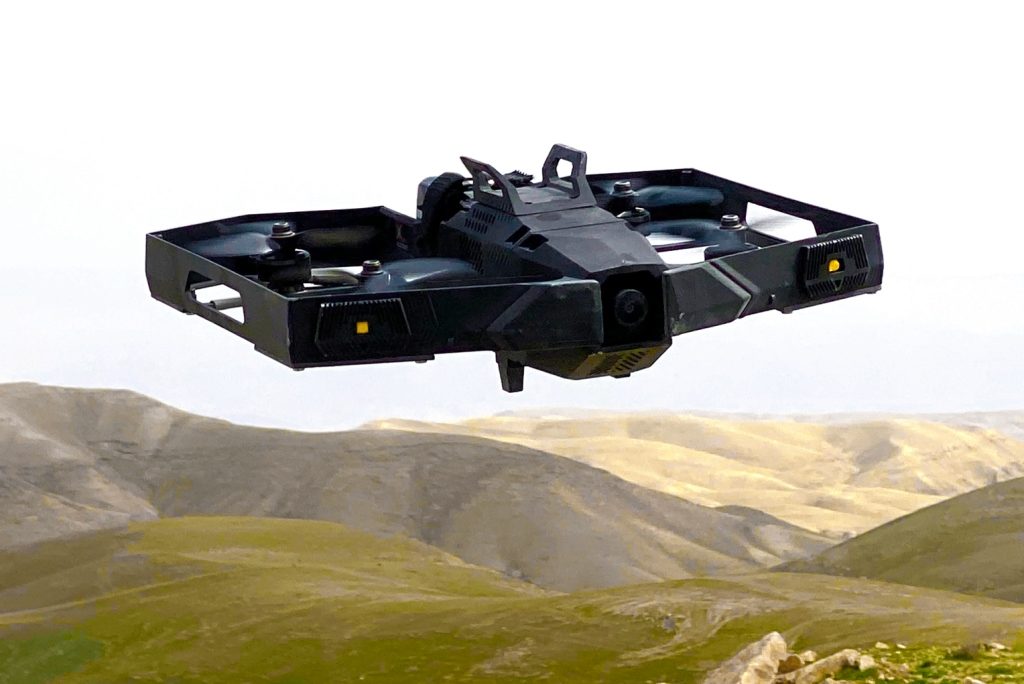
Xtend: more on the Next Generation Xtender small UAS
Unveiled in mid-February this year, more details are now emerging on the Next Generation Xtender tactical small UAS system developed by Xtend of Israel. Founded in 2018, Xtend first success was the Griffon, a counter-UAS drone of which over 150 have been delivered to the US Department of Defence. Its high speed, around 150 km/h, allowed it to quickly reach the threatening drone and intercept it using a net-like effector which entangles the rotors or propellers causing the opponent to crash, the effector detaching from the Griffon as soon as it impacts the target. The interception drone takes off autonomously based on 3rd party detection (radar, EW etc.) and the final engagement is fully manual, and to cope with the high speed and the required agility in the terminal engagement phase Xtend developed an operating system that has since then been used in its next products, with constant improvements. “The key advantage of our operating system is that it allows minimal training time to reach full proficiency, full training of a C-UAS operator requiring 3-5 days, that of a Wolverine C-IED operator 1-2 days, which are reduced to a single day for a multimission drone operator and to one hour for an operator using the Xtender indoor drone,” Gadi Bar-Ner, Xtend’s Chief Business Officer tells EDR On-Line, adding that to reach full proficiency on the Xtender a three-day training is required.
To stress the ease of use Gadi Bar-Ner explains that during a US DoD field trial held in 2021 the Xtender was assigned to an allied unit; company personnel trained the team leader in around 20 minutes, who in turn taught the basics to his soldiers who were given the mission profile, which included exiting the building passing through a hole the size of a brick, and the mission was carried out flawlessly.
The New Generation Xtender, or Xtender Mark II, is the subject of our talk with Gadi Bar-Ner. The system is made of a number of subsystems that include a Ground Control Unit (GCU), a UAS controller, Virtual Reality (VR) goggles, the backpack also defined the Xtender Carrying System, and a minimum of 2 UAS, plus a kit of spare parts for field level maintenance. Overall the complete system weighs less than 5 kg. The Next Generation Xtender is an electrically powered vertical take-off and landing quadcopter featuring a central fuselage containing the main batteries and the electronics, with four spars each sustaining an electric motor coupled to a rotor. The spars are connected to an outer structure that protects the rotors should the air vehicle impact a solid obstacle, something possible when operating inside buildings. The airframe is approximately 400 mm long, 300 mm wide and 100 mm high and has a weight of around 1.2 kg, maximum speed being 12 km/h. It can operate at temperatures between -5°C and +40°C, with winds up to 10 km/h, and gusts up to a maximum of 15 km/h. A day/night camera is fitted at the front of the central fuselage; it features a 145° field of view its sensibility allowing operating at 0.0001 lux, which means Night Level 6 that is a moonless, overcast night sky with only starlight. According to information provided, flight time is limited to 10 minutes ”with minimal take-off weight”, however the quick release battery system allows replacing the powerpack and carrying out a new mission in a very short time.
Once the mission is called it takes less than one minute to grab the air vehicle from the Xtender Carrying System, get prepared with the control systems and launch it. The UAS mission is usually controlled by an operator wearing VR goggles weighing 300 grams with batteries, which provide a 110° field of view, the OLED display having a 16:9 aspect ratio. The operator enjoys an immersive situational awareness, natural hand-eye coordination allowing him or her to easily fly the UAS using six degrees of freedom hand stick. This is allowed by the Skylord Drone Operating System, which translates natural hand gestures to UAS control commands using the company patented Mark&Fly technology. Two-way communications are ensured by a data link operating in the 1.6-2.3 GHz frequency band with a 10 MB per second maximum bandwidth, however Xtend is ready to provide a link in different frequencies should a customer require it.
Seeing recorded missions carried out by the NG Xtender shows the drone agility to move inside buildings. “We call it a human guided autonomous system, which might sound as an oxymoron, but this is exactly what it is,” Gadi Bar-Ner explains. “Our drone is fitted with a series of sensors such as lidars, etc, which provide data to edge-computers that carry out sensor fusion, so in theory the system should be fully autonomous, in the sense we give today to that expression. However we consider we are still some five years away from true full autonomy, therefore we combine autonomy capabilities with those of the human being,” he says.
Talking of a test carried out in the United States, where the drone was required to enter a building, clear the ground floor, reach the first floor flying through the stairs, clear the top floor and exit from a window, the Xtend head of business tells us that the Xtender managed to do all the mission in less than 20 seconds while competitors took some minutes to complete it.
According to Xtend, coupling virtual and augmented reality technologies with artificial intelligence-driven applications and machine learning flight algorithms makes not only the system simple to use, but also provides it with capabilities such as target classification, verification, and tracking.
Another key element of the NG Xtender is the capability for a single operator to control up to three air vehicles; flight control can be carried out one at a time, while the inputs from the UAS in terms of video are available simultaneously. This allows not only to use one of them i.e. in perching mode to survey a room while a second steps in the next room, in a leapfrogging movement, but also to exploit one of the air vehicles as a radio relay should some areas be shielded from GCU signals. A further step will be to add multi-drone flight capabilities in order to operate all three UAS simultaneously also in the air.
Most often the Xtender is operated using VR goggles, however it can also be controlled by the GCU, which bigger screen allows the commander to carry out the mission while retaining his local situational awareness. With a weight of 900 grams with batteries, the GCU allows six hours of operation, as well as to record the whole mission. The footage seen on the GCU can also be forwarded to upper command levels.
The Xtender research and development phase took place in Israel, however the main customer being the US the system is now produced in the United States, more specifically in Florida at the Xtend US premises, where the programme management is now also based. At least five European nations have shown a considerable interest for the Israeli product, among them Germany and the United Kingdom, and Xtend aims at adding further potential customers to the list. Xtend is currently working with the UK government to put its innovative capabilities into combat evaluation, after successfully doing so in the United States and Israel.
Photos courtesy Xtend

